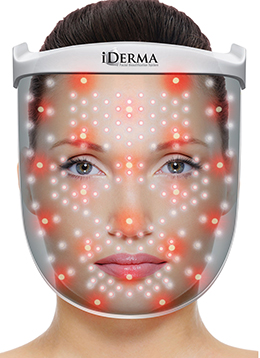From skin care to hair care, a new class of tech-driven beauty products has emerged in the market, allowing consumers to self-treat their issues in real time. While Kline has reported on beauty device companies launching complementary apps to beauty devices, 2017 marks the year of personalization’s emergence in the field. Beauty companies and tech companies alike are playing in this new space that links high–priced devices to phone apps.
Companies more advanced in Internet of Things (IoT) are pinpointing gaps in the beauty devices market and entering it to offer innovative solutions to customized beauty. At CES 2017, Samsung, a company famous for its electronics, unveiled two new beauty concepts—the S-Skin and Lumini devices. The S-Skin’s function is to analyze skin characteristics. The device is handheld and contains an LED light and complementary microneedle patch. The LED light delivers a customized anti-aging treatment, and the microneedle patch delivers skin care ingredients deeper into the skin, where the user needs it the most. The Lumini device, on the other hand, analyzes skin issues before they even occur by identifying issues under the skin’s surface. The device also recommends cosmetic products to treat underlying skin issues.
Skin care isn’t the only area of revolution in beauty tech. Withings, a company known for its innovations in the health technology field, partners with beauty giant and cosmetic innovator L’Oréal to provide consumers with a better way to brush their hair. The new Kérastase Hair Coach is the world’s first smart hairbrush that scores the quality of hair, monitors different hair care routines, and provides insights and product recommendations on how to better treat consumers’ hair. French pharmaceutical laboratory Pierre Fabre even created a connected cellulite treatment device called the Elancyl Slim Massage Coach.
These new at-home beauty devices are making it easier for consumers to self-diagnose without ever having to step foot into a dermatologist’s office or spa and are solving problems consumers may not have known existed—like how to properly brush their hair! These devices are taking beauty technology to the next level, and we will capture innovations such as these in the sixth edition of our upcoming Beauty Devices: Global Market Analysis and Opportunities.
Focusing on the market size and growth, key changes in distribution, the competitive landscape, notable new launches and product trends, this new edition will feature a bonus section on connected beauty. This chapter will contain profiles of apps that merge technologies with products in the skin care, sun care, hair care, and nail care categories and will analyze and assess the current status and future implications for beauty marketers. To learn more, please contact us.
Tentative Apps and Products to be Profiled in the Connected Beauty Section

